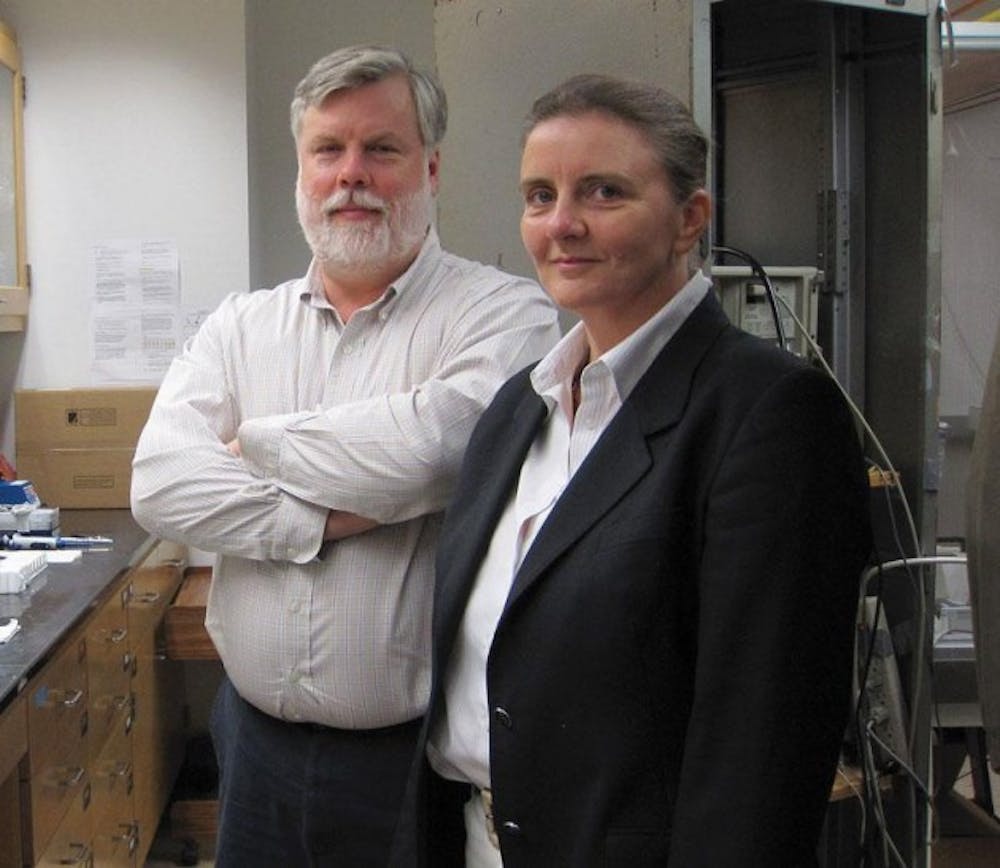Researchers are getting closer to understanding autism, and it's all thanks to a mouse.
The first transgenic mouse was developed at UB, and the surprising findings have the potential to help researchers in creating better interventions and treatments for patients with autism spectrum disorder (ASD).
The mouse was injected with DNA containing the genetic information for the disorder and subsequently exhibited traits associated with Timothy Syndrome and ASD in general.
Timothy Syndrome is an exceptionally rare type of autism: approximately 50 people in the entire world have been diagnosed.
Scientists from UB and Stanford University presented their research in the Proceedings of the National Academy of Sciences (PNAS).
Glenna C.L. Bett, Ph.D., associate professor of gynecology and obstetrics, and Randall Rasmusson Ph.D., associate professor of physiology and biophysics, conducted research on ion-channels in the heart in 2004. During their studies, they encountered research that showed a mutation in a specific calcium channel that they thought might lead to Timothy Syndrome.
Approximately 80 percent of children with Timothy Syndrome were found to have autism spectrum disorder.
It was discovered that Timothy Syndrome is linked to a genetic mutation that causes the voltage-gated L type calcium channel, a protein, to be altered in such a way that causes excess calcium to flow into cells.
In simple terms, the disorder creates an imbalance of calcium inside an individual's cells, something that can be quite problematic; an overload of ions disrupts homeostasis.
"When the initial report came out that a [mutation] led to such widespread symptoms, we realized immediately that a mouse model would be the key to understanding not only the importance of the L-type calcium channel in the heart, but in other tissues, and primarily the brain," Bett said.
The defects as a result of the mutation are catastrophic, according to Bett.
"We know there are patients that have problems with their brains and their hearts, but as a practical matter, you can't study that very effectively in a human being," Rasmusson said.
Subsequently, the transgenic mouse was created to effectively study the rare condition.
"We knew what [the mutation] did in humans, but we deliberately looked to see how much of the human disease was recapitulated in the mouse," Rasmusson said.
The behavioral psychology of mice has been studied thoroughly enough in the past to aid in carrying out this research.
"We know how a mouse would normally interact. We know what they do in social situations and how they learn," Bett said.
This knowledge allowed the scientists to find a relationship between social behaviors, repetitive behaviors, and communication irregularities exhibited by the transgenic mouse that mimicked the behaviors found in humans with Timothy Syndrome.
Currently, autism spectrum disorder is diagnosed by clinical observations and testing by a professional using one or more standardized tests; however, proper diagnostics become problematic because of the syndrome's unidentified biological origins.
"One of the problems in looking at ASD is that you get diagnosed with ASD as a behavioral diagnosis," Bett said. "There is no biomarker; there is no indication other than you have several of these key behavioral types."
By identifying biomarkers, strides can be made in producing effective treatments and interventions for those with autistic spectrum disorder. However, regardless of how large the strides that are taken to identify ASD are, it will always be a difficult disorder to accept.
"My whole family thinks my cousin has autism, but his mom doesn't see it at all," said a UB student who chose to remain anonymous. "We always told her to get it checked out, but she denies it. So it's good that there is some evidence of where it came from."
Email: news@ubspectrum.com





